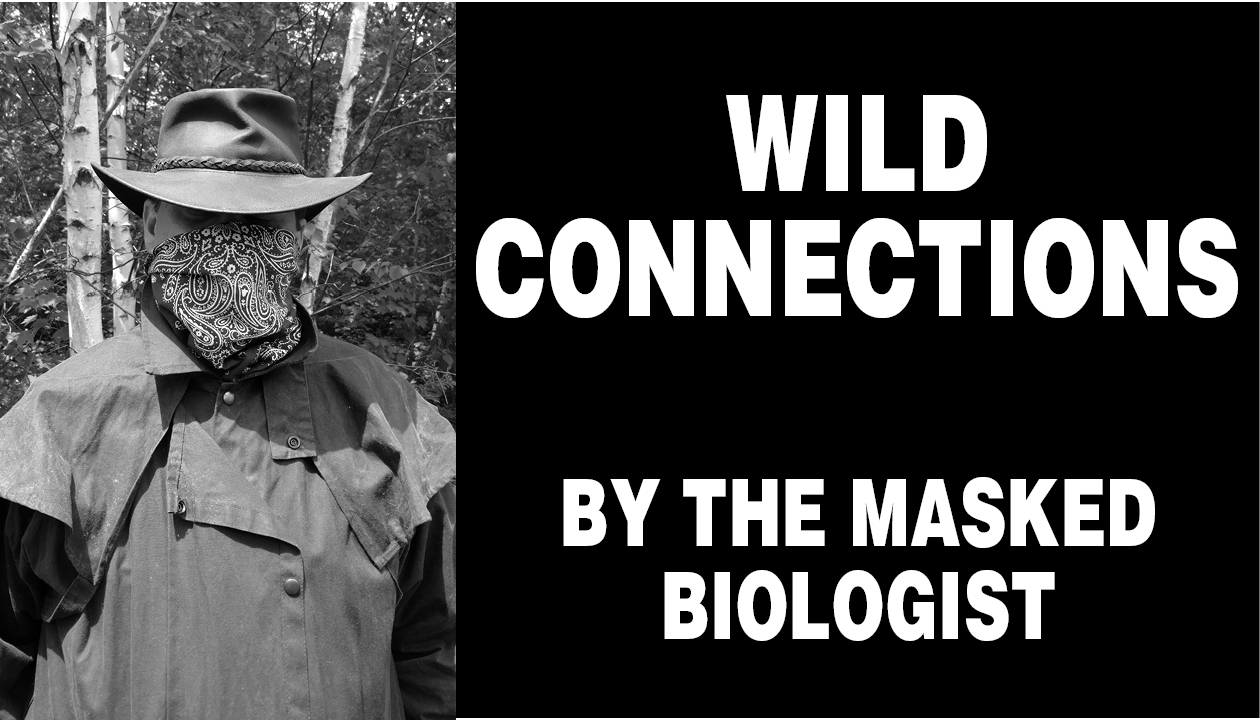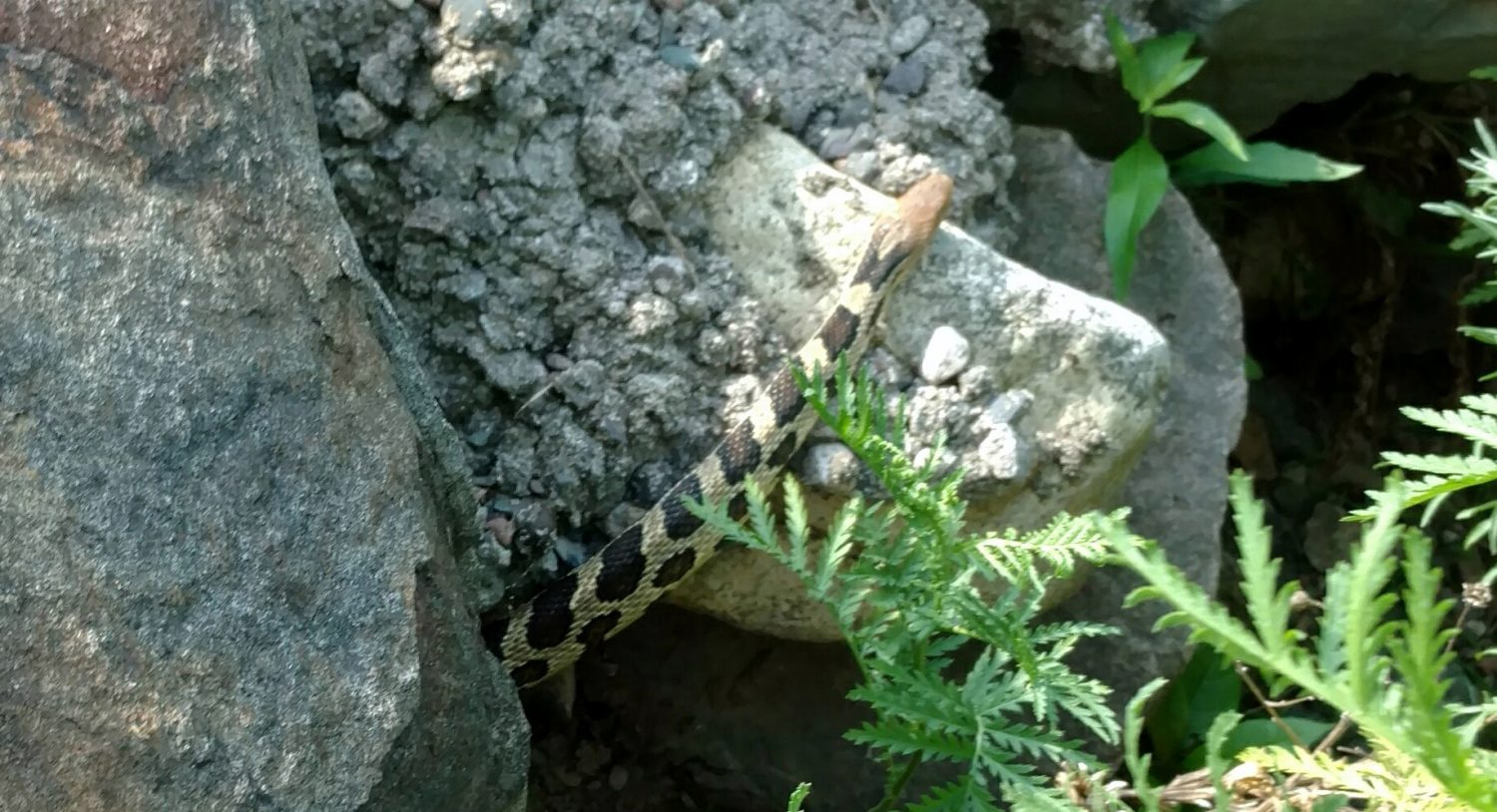No need to be rattled by snakes

Only the nonpoisonous variety are at home in the Northwoods
By THE MASKED BIOLOGIST
Special to the Star Journal
As a kid, I remember looking at American Revolution flags in the classroom encyclopedia. A few of the flags used the rattlesnake, including the well-known yellow Gadsden flag and the Rattlesnake Jack of the U.S. Navy. I thought it would be interesting to examine the use of the rattlesnake as one of our national emblems in the early years of our nation’s history.
In the late 1700s, the colonies were struggling with escalating disagreements, not only with Britain, but with each other. Statesman Benjamin Franklin designed a graphic of a rattlesnake cut into pieces, with the words “unite or die” above. At that time, superstition held that if you cut a snake into pieces, and arranged the pieces in order before sunset, the snake chunks would reunite and become whole. Franklin was sending a message to the colonists to join forces and focus on the one common enemy overseas. Paul Revere later used the same theme in print. The rattlesnake began to appear as an emblem for military groups, carrying the message of unity and defiance on flags, pennants and equipment.
Why use the rattlesnake? Like the bald eagle, the rattlesnake was unheard of in the Old World; it was found only in the Americas, common throughout the colonies. The rattlesnake could rattle to signal danger to enemies. It coiled up and hissed defiantly at any potential threat. Its bite carried poison that was usually fatal. Combine these with the belief that it could miraculously mend itself, and you have an extremely frightening animal. The rattlesnake became the embodiment of unity, defiance and lethality. Even today, these symbols are held in esteem by patriots. As recently as 2002, Secretary of the Navy Gordon England ordered all U.S. ships to fly the Rattlesnake Jack from Patriot’s Day through the duration of the global war on terrorism. This was the navy’s first flag, showing a rattlesnake moving across thirteen red and white stripes above the words “DON’T TREAD ON ME.”
Wisconsin is home to two species of rattlesnake. Both are special concern species, so rare they are both protected by state law. The timber rattler is the more common species, the massasauga being extremely rare. Both are found in the steep, rocky bluff country in far west and southwestern Wisconsin; they do not live in the north. massasaugas get 2 to 3 feet long, but timbers can get larger. Though they are poisonous, no one in Wisconsin has died from a bite since 1900. The snakes’ numbers dwindled in large part because of humans; massasaugas had a paid bounty on them until 1975, when the species went from a bounty species straight to Wisconsin’s threatened and endangered species list. Humans also changed habitat to farmland, which resulted in snake population decline.
The snake’s rattle is formed in the process of shedding its skin. As it crawls out of the old skin, the last piece of skin turned inside out is the tail, which stays connected to the snake inside out, forming the button around which a new tail segment is formed. Each time the snake sheds, maybe 3 times/year, it adds another rattle button at the very end, resulting in the oldest, largest rattle being closest to the body. As the outside layers are added, inside layers break off making the rattle functional.
Rattlesnakes take a couple years to reach sexual maturity. They can live for 10 years or more. They give birth every three to four years. That’s right, they give birth—they are one of the few types of snakes that are viviparous, meaning they do not lay eggs, but rather give birth to live baby snakes. This is not the same kind of live birth that mammals have; think of it like the eggs hatching early inside the snake. The young snakes are easy prey for a wide range of predators, including raccoons, skunks, birds, coyotes and even other snakes.
The snakes most often confused with rattlesnakes in the Northwoods are fox snakes, also called pine snakes. These heavy-bodied snakes have diamonds on their backs, and will rattle their tail in the grass and leaves to startling effect; but these nonpoisonous constrictors have nothing on true rattlesnakes.
The Masked Biologist earned a Bachelor of Science degree from a university with a highly regarded wildlife biology program. His work in natural resource agencies across the country provided opportunities to gain experience with a variety of common and rare fish, plant and wildlife species. Follow The Masked Biologist on Facebook. Email questions to [email protected].
Leave a reply
You must be logged in to post a comment.


